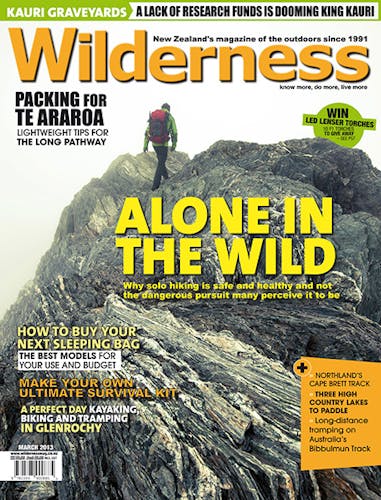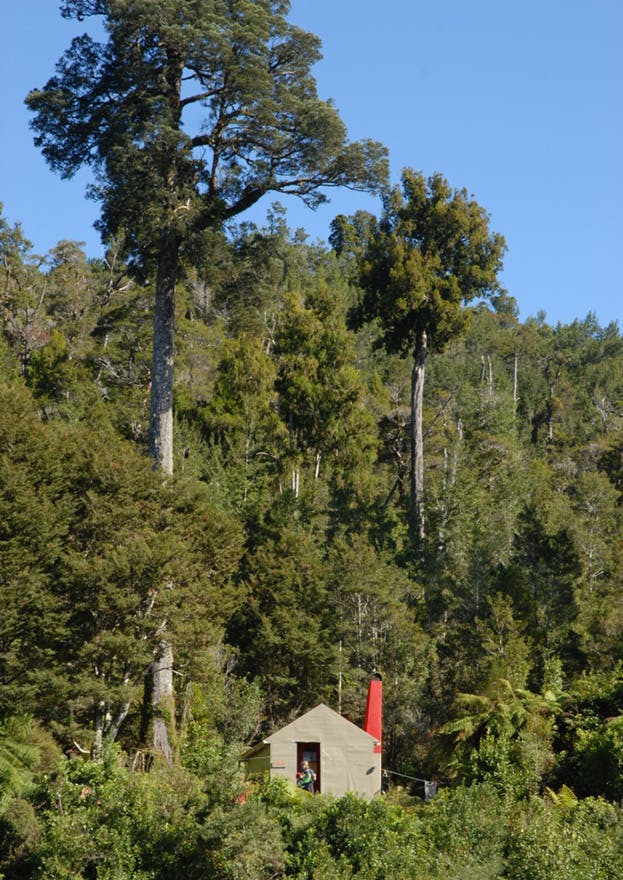Our resident Coaster, Pete Lusk, lets rip at the Old Ghost Road tramping and mountain bike track
New Zealand is about to get a dramatic new mountain bike trail courtesy of the government’s much-vaunted National Cycleway Project.
The Old Ghost Road, the first section of which opened on February 2, offers a thrill around every corner as it winds up the Mokihinui Gorge from Seddonville to Lyell camp in the Buller Gorge.
When I say thrilling, I mean just that. The section along the top of the Lyell Range is currently being blasted through solid granite on the precipitous slopes of Rocky Tor. This is not a bike track for the fainthearted. A fall could easily send you plunging down the slippery slopes and into multiple injury territory.
There are four new huts, all built in stunning locations, and according to the Ghost Road Trust’s Phil Rossiter, fees will be comparable to DOC’s.
I walked the full route of the trail recently, except for one particularly scrubby section where bush lawyer had a bad habit of twining itself around my neck. I bypassed this by dropping into a creek only to discover it wasn’t much easier.
The mid part of the Ghost Road follows the fault rupture of the 1929 Murchison earthquake. Even though this cataclysm ripped through the valleys 83 years ago, mountainsides are still bare, with rocks as big as houses piled upon them. In Stern Creek, the trail winds under these dramatic slopes and past two lovely lakes settled among the limestone debris.
For the bush lover, the track offers some of the best native forest in the country. Where the Mokihinui River levels out above the Forks, there is a forest of almost pure matai. I’m sure it owes its existence to the extraordinary fertility still coming down the river from the 7.8 earthquake.
But not all is good with Ghost Road.
The whole route is on public conservation land, but it’s as if DOC has swapped its priorities and handed it over to the tourism industry.
I’ve already mentioned the rich rainforests and magnificent landscapes. But there’s more: whio/blue duck, several species of giant land snail, great spotted kiwi and one of the country’s best habitats for long finned eel.
DOC’s West Coast Conservation Management Strategy (CMS) designates the area as a ‘priority site for biodiversity’. But in the words of the local conservation board, DOC “overrode” the CMS and the south branch of the Mokihinui became just the opposite – a priority site for recreation and tourism.
Given that the trail has to be 1.5m wide and passes through such difficult country, I was impressed by the care taken by the track-builders. Chainsaw cuts are neat and trackside vegetation has been replaced. But by the same token, thousands of trees have been felled including a giant 500-year-old kahikatea at Mokihinui Forks Hut. When I heard DOC planned to extend this classic six-bunker, I immediately thought of the tree. Surely DOC wouldn’t fell such an icon of the backcountry? But in reply to my hasty email, DOC’s Kawatiri area manger Bob Dickson said the tree “constrained” the site and had to go.
Shift the hut, I thought, it’s only small and easy to pick up with a chopper.
There’s something else that worries me about this trail. It’s as if everything learnt by DOC and the Forest Service over the last 100 years has been forgotten. Old skills that we once took for granted have been neglected or lost. For example, the new Stern Hut has been built on the flood plain of the river and only meters from its bank. One flood later and groynes are being built to save it from the next big flood.
I can’t see the new Specimen Creek Bridge lasting more than a year or two. It’s been built so low a big log coming down during a flood could easily rip it off its moorings.
There’s also the issue of safety. The frighteningly steep section of trail across the slopes of Rocky Tor will need at least a kilometre of sturdy safety rail. The precipitous Mokihinui Gorge will also need railing, unless we’re prepared to reclassify mountain bikers as expendable.
And while we’re clocking up these extra millions of dollars, three dangerous side creeks in the gorge will require bridges rather than the fords currently provided.
The Old Ghost Road has become a far bigger project than its backers originally planned. Will it ever be finished? And if it is finished, who will put up the money to maintain it in the face of the floods, earthquakes, tornados and avalanches the West Coast will throw at it?







